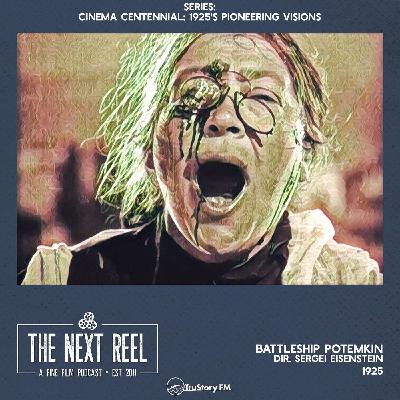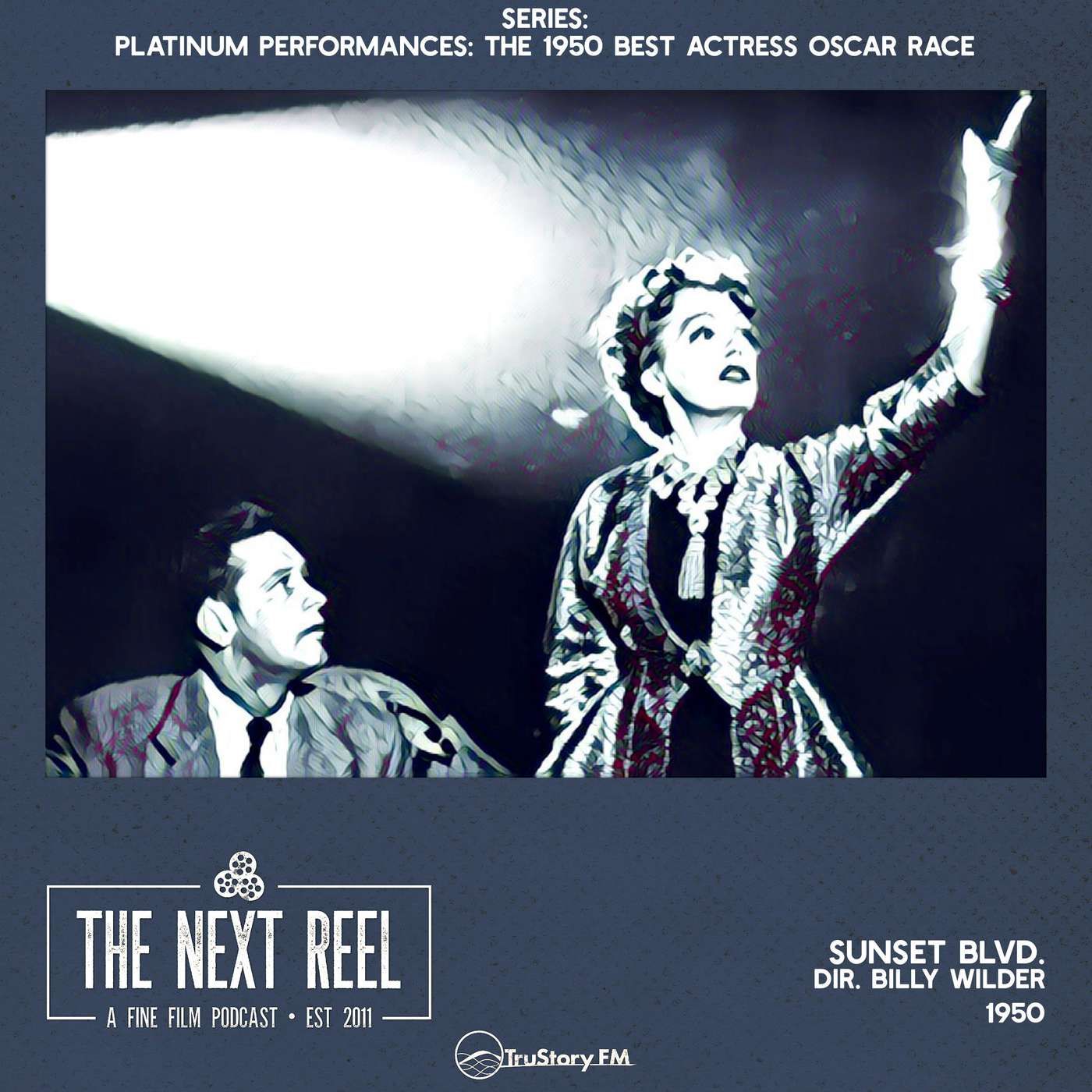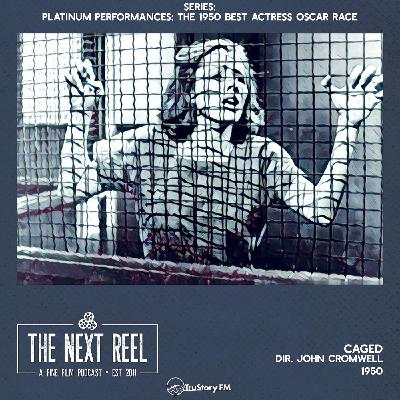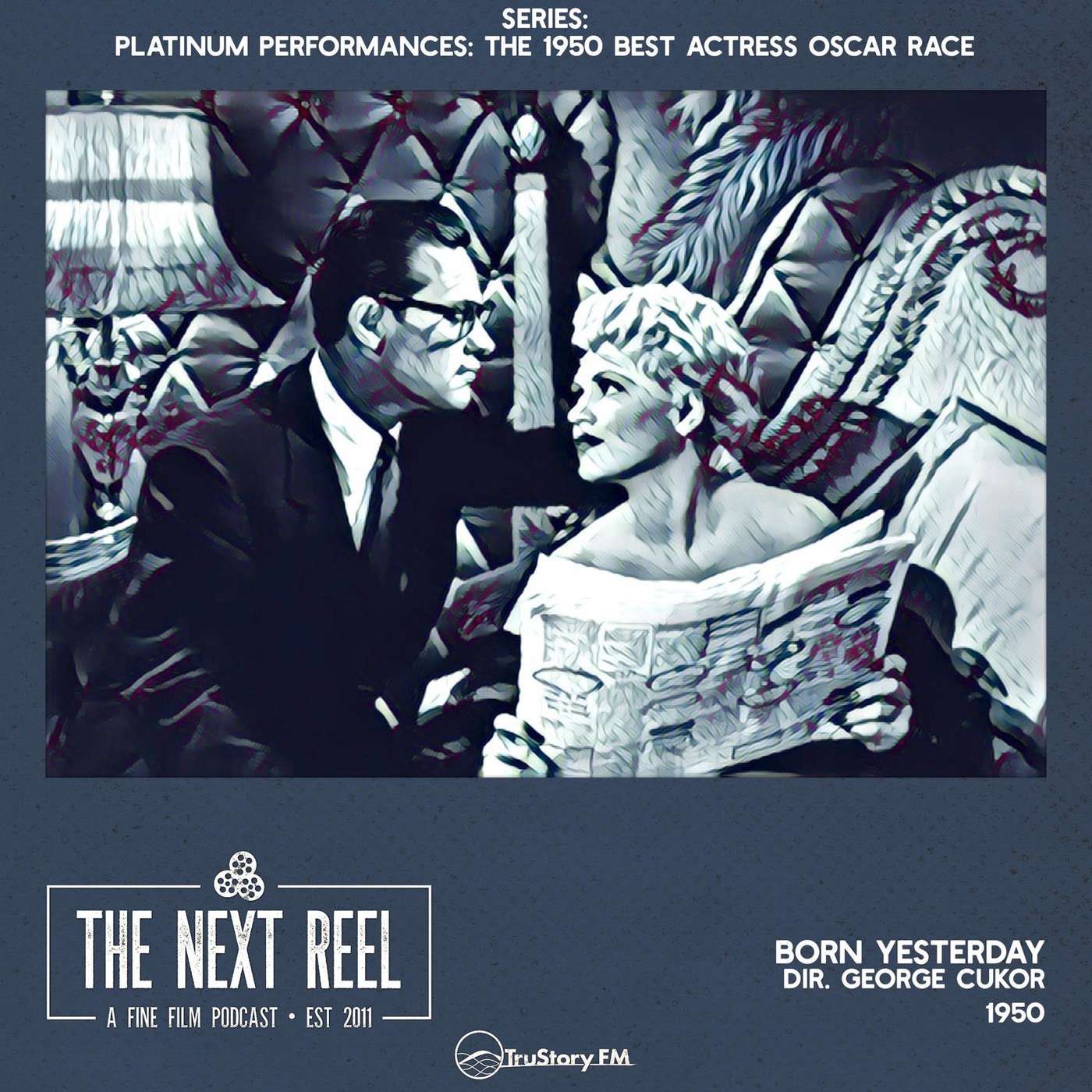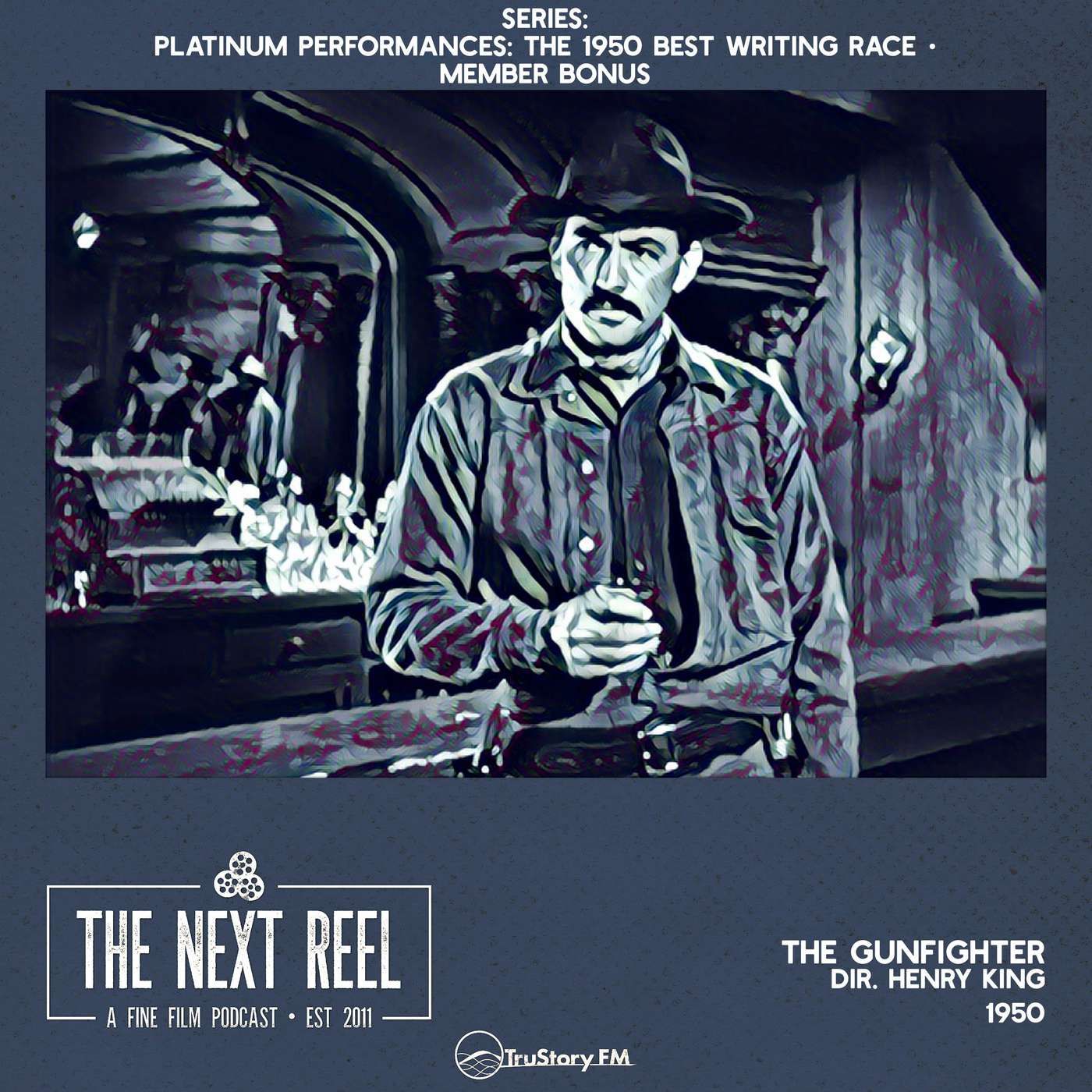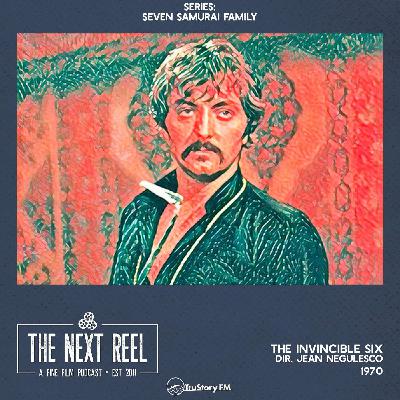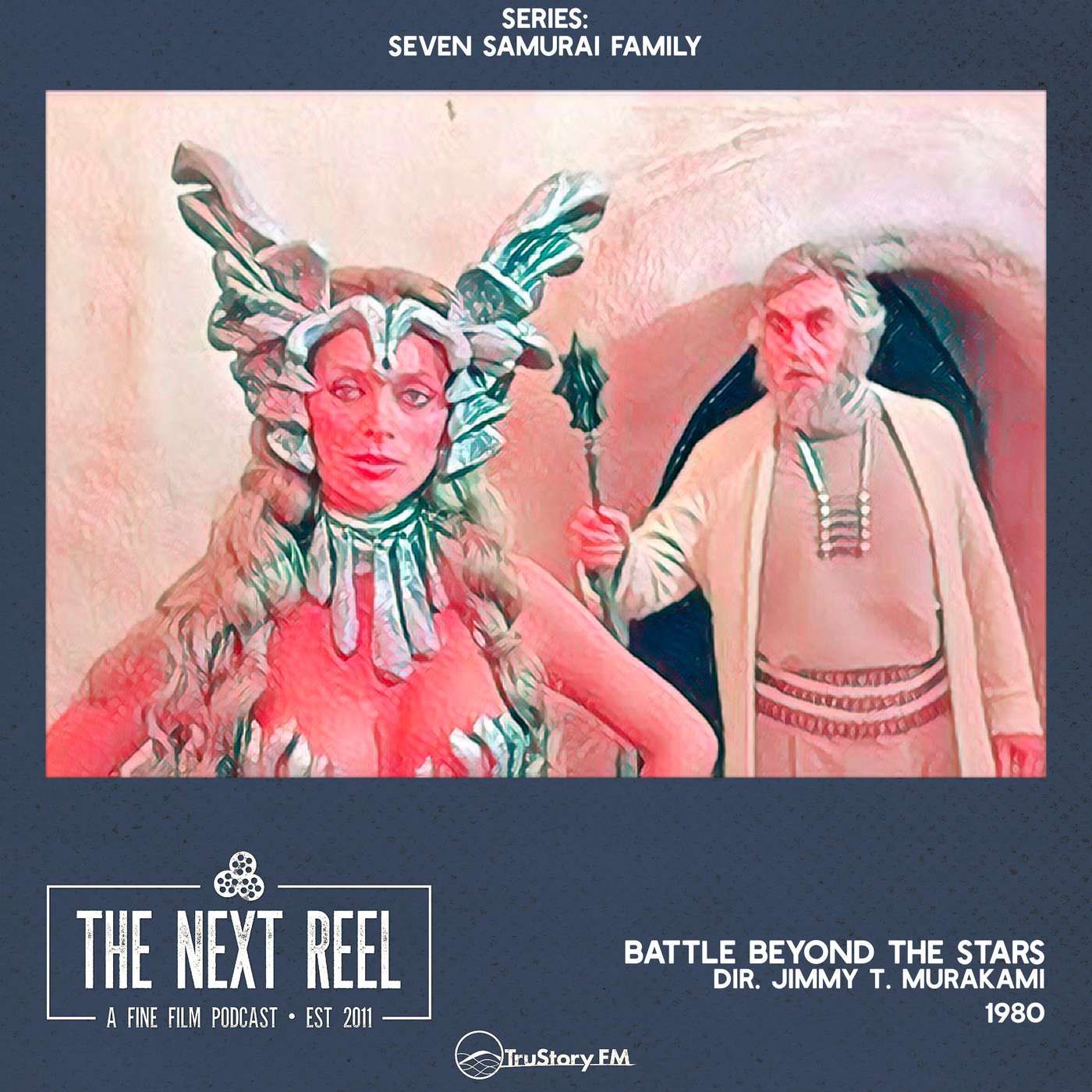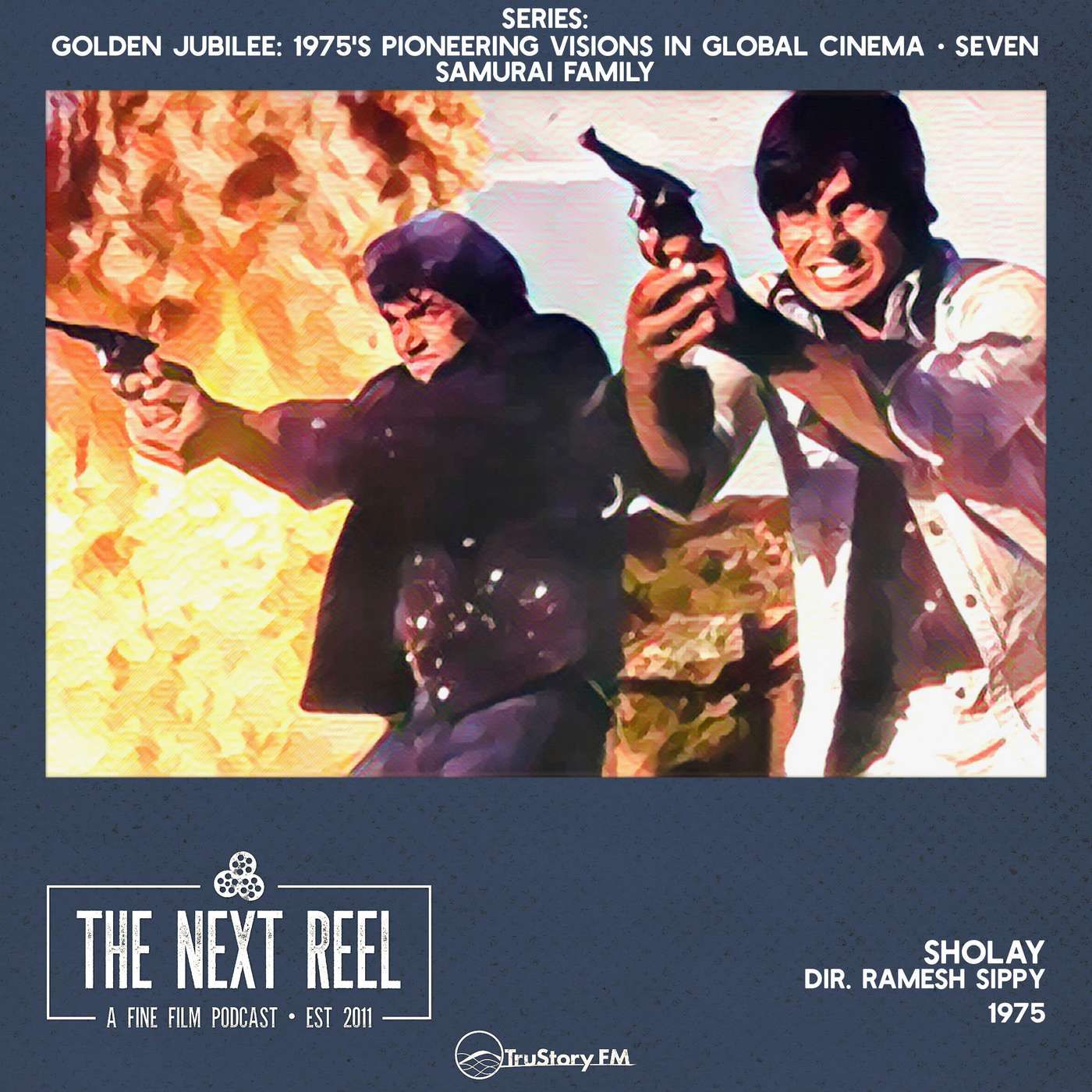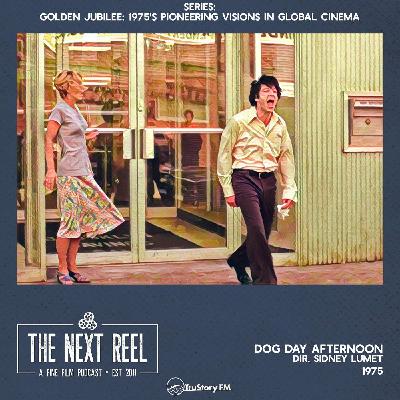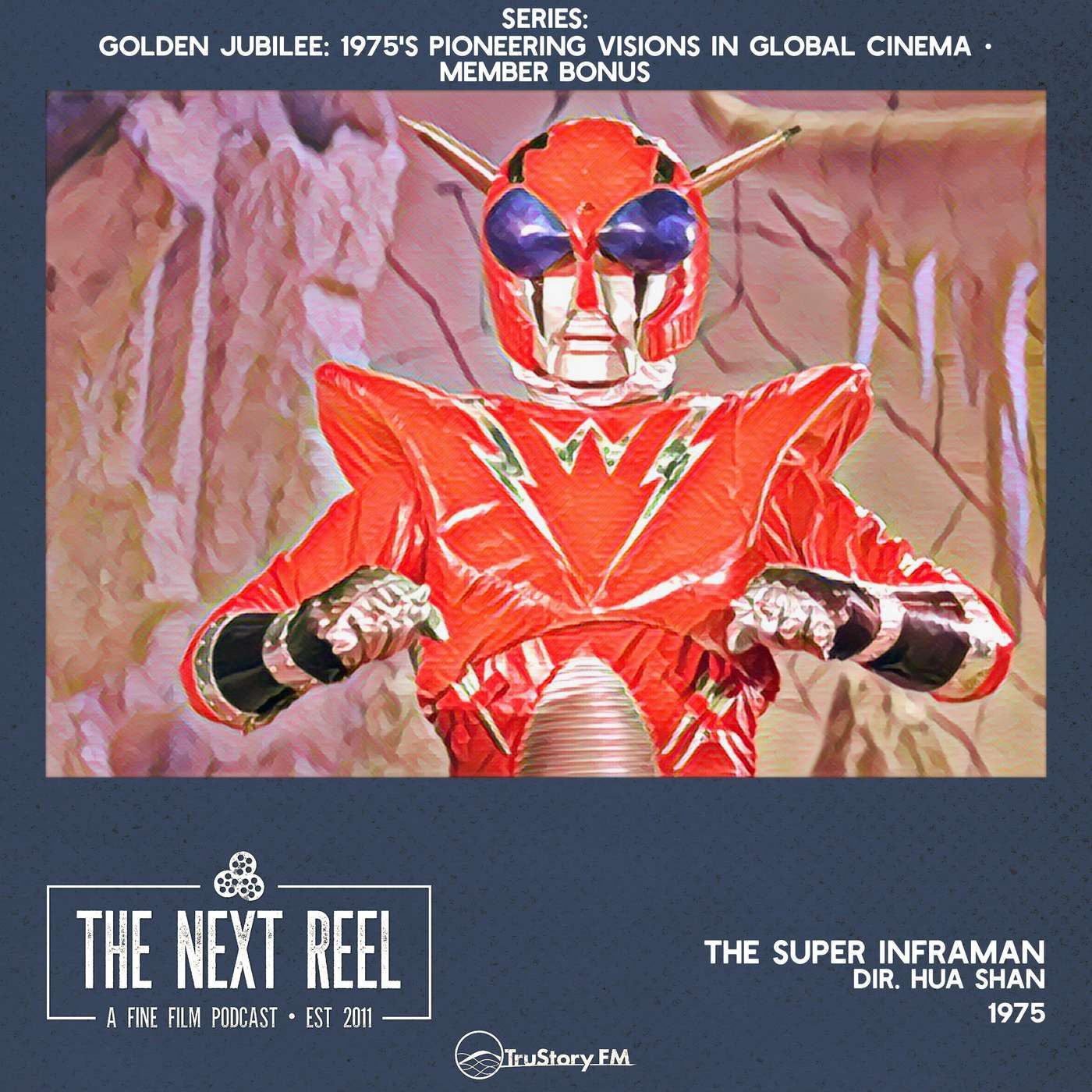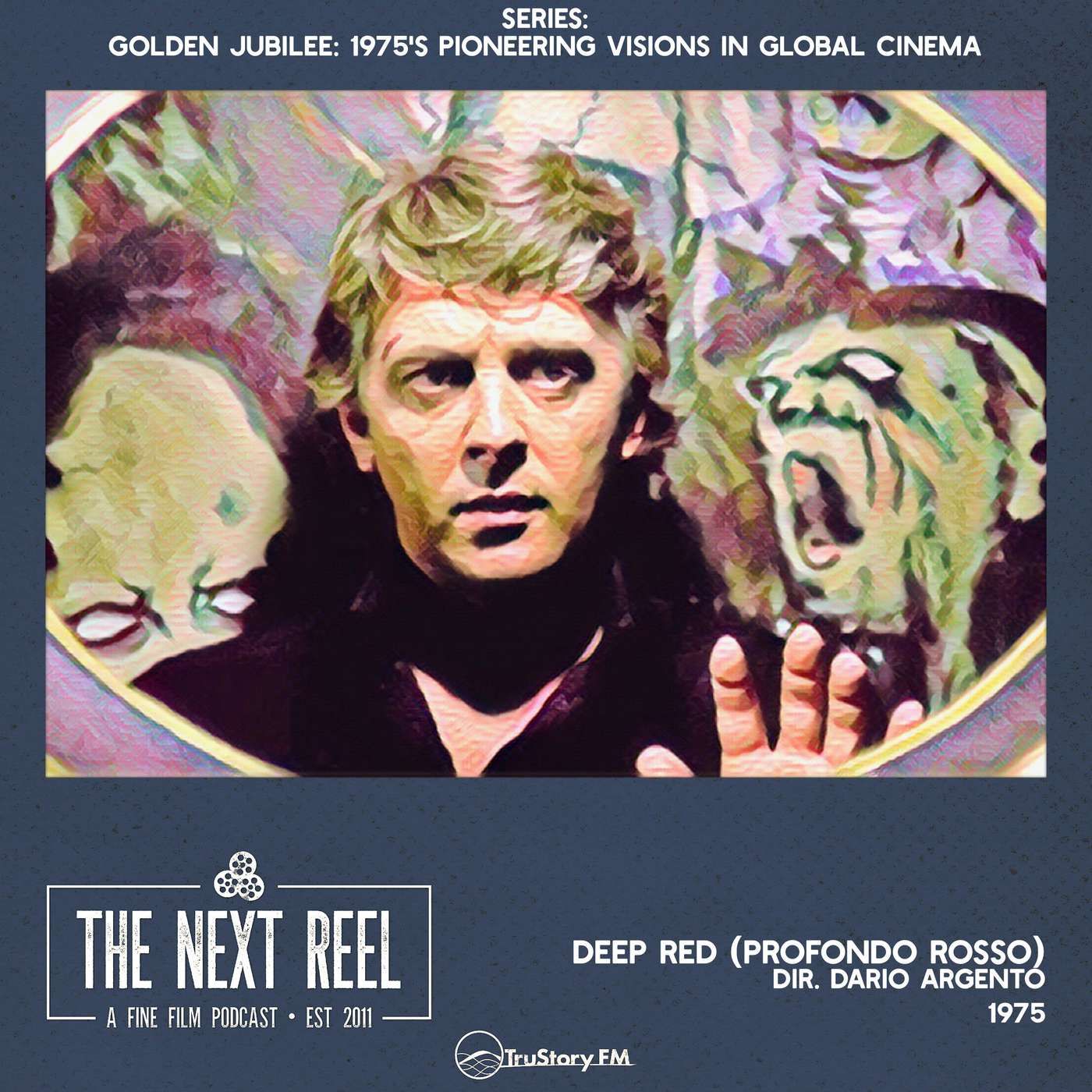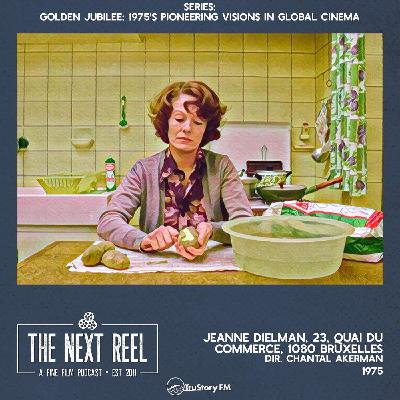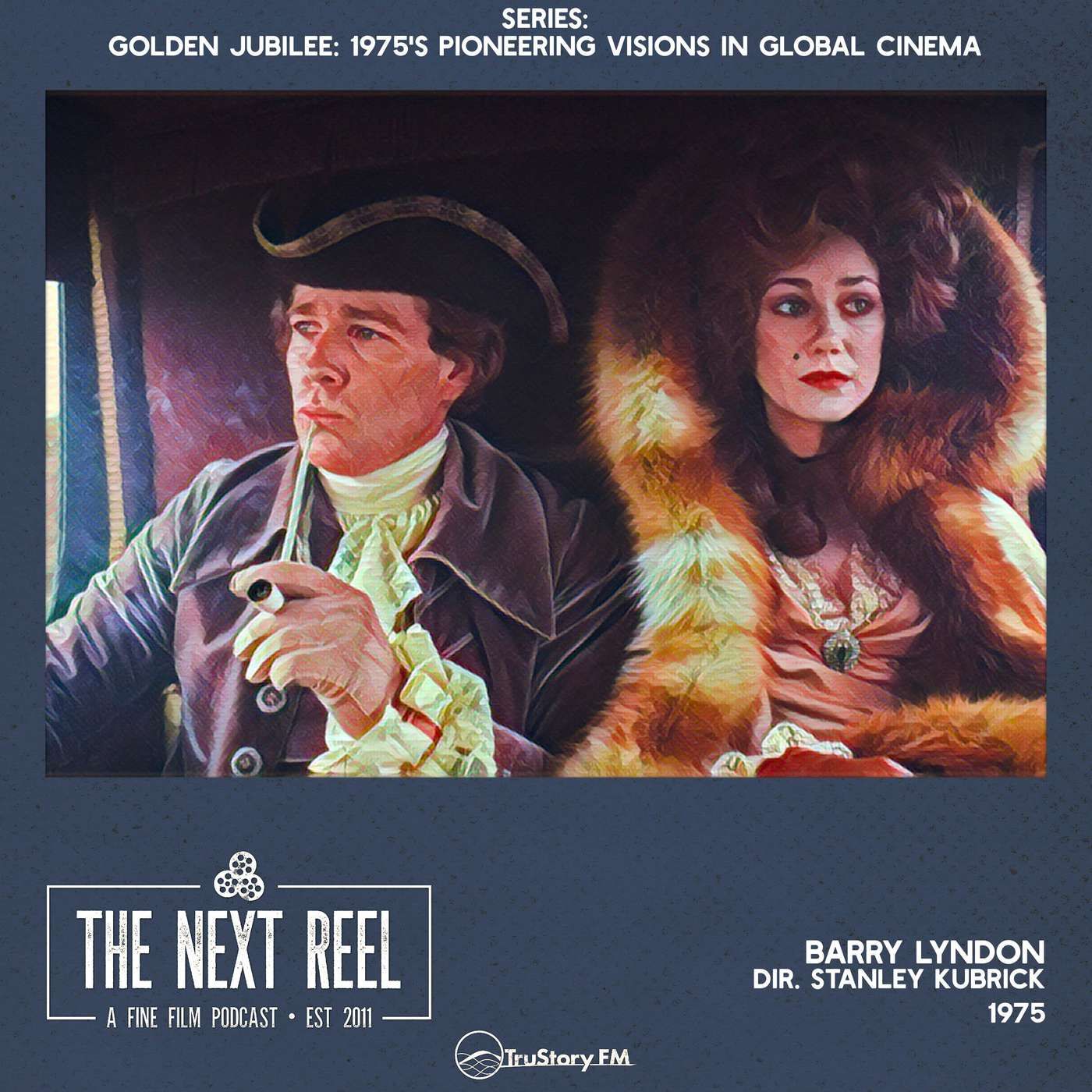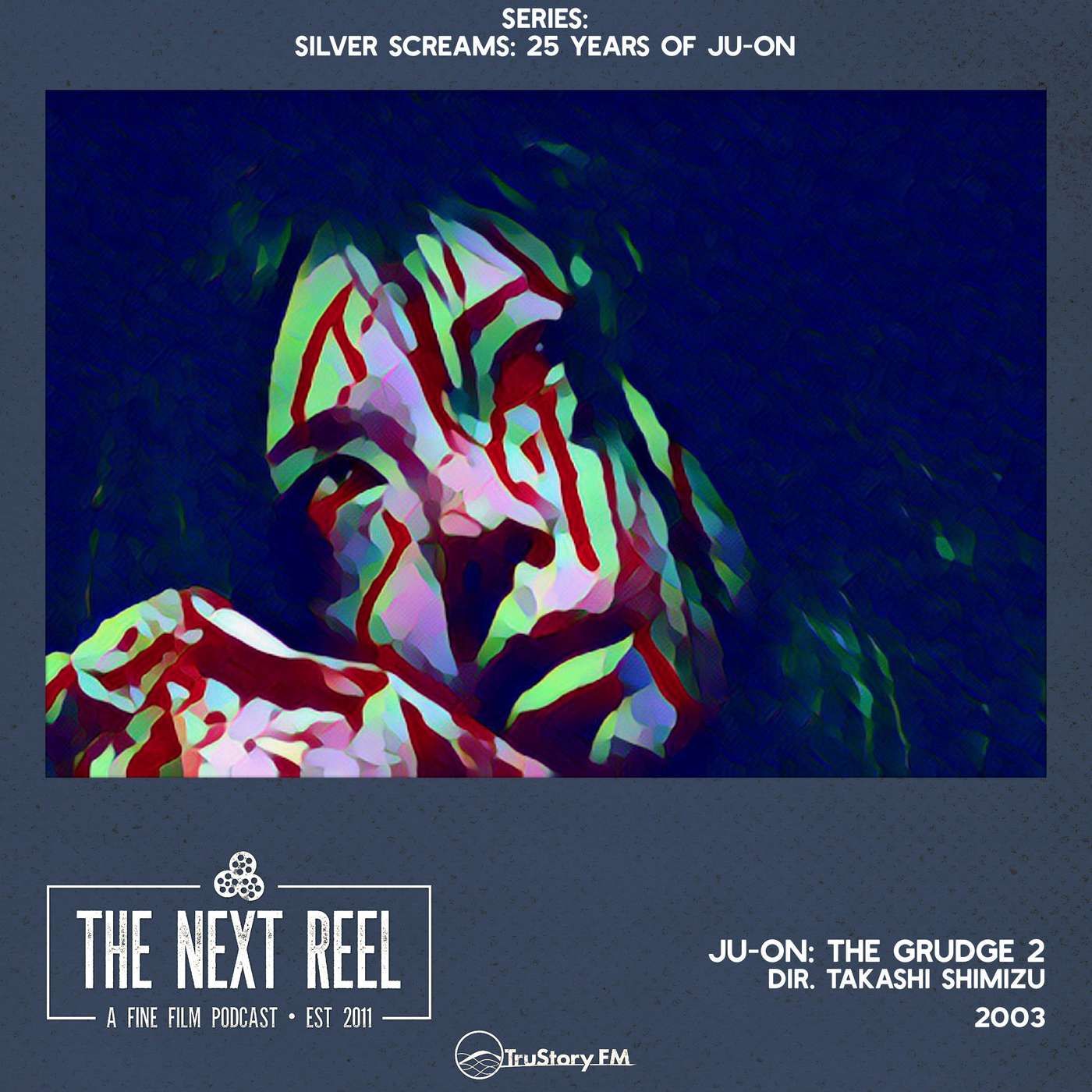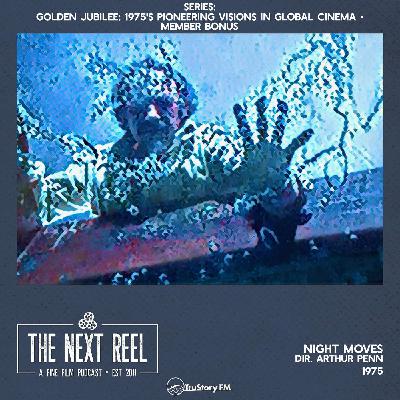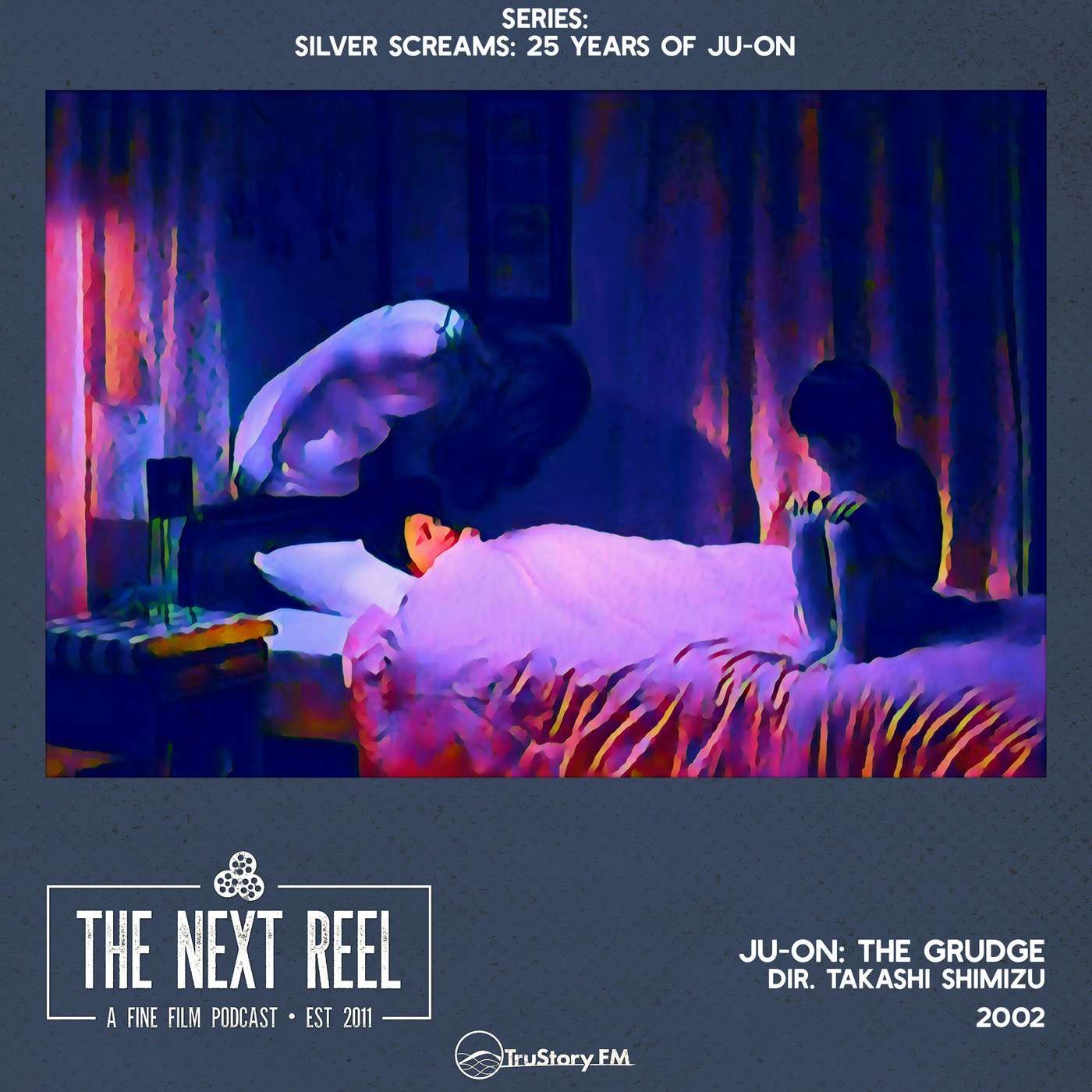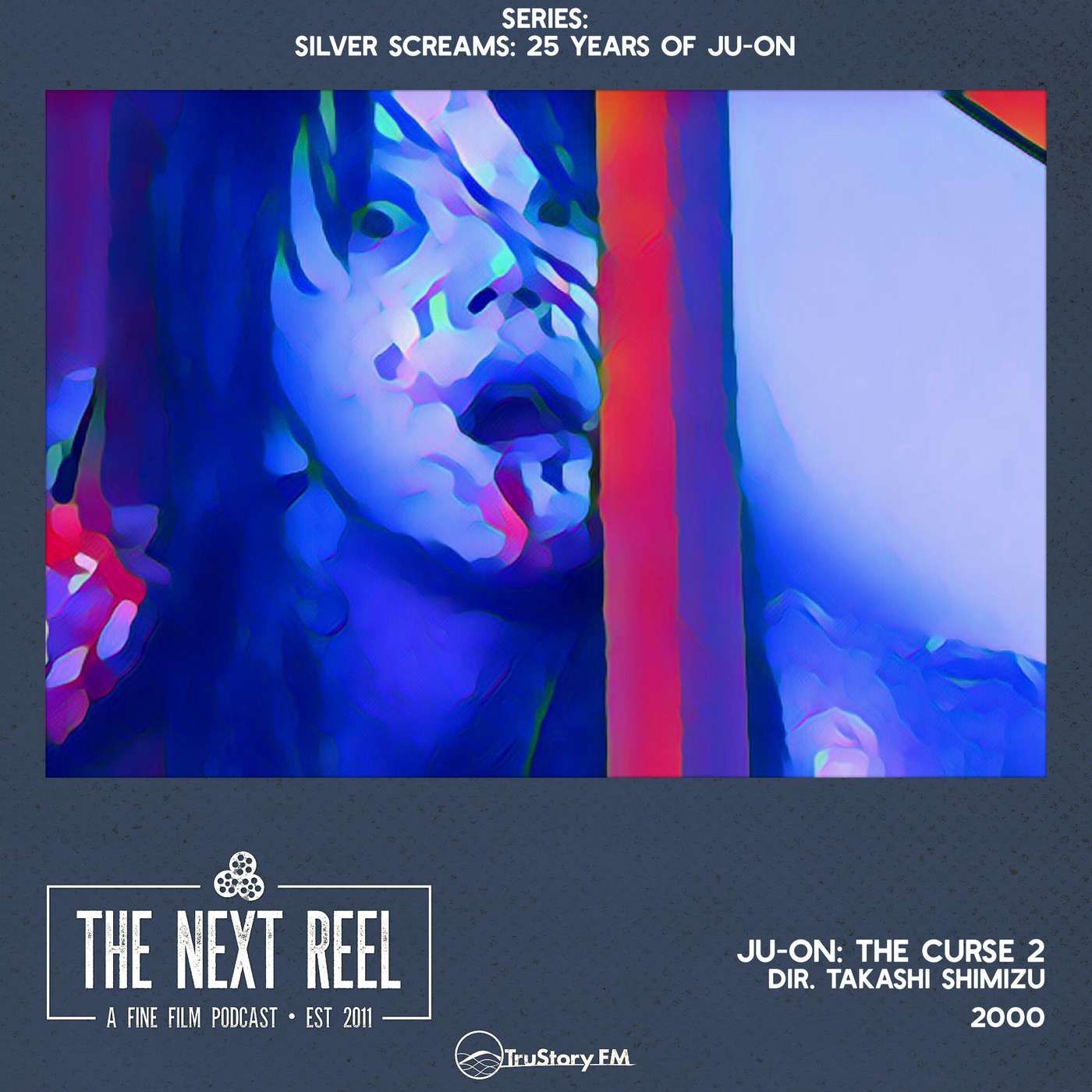Discover The Next Reel Film Podcast
The Next Reel Film Podcast

 The Next Reel Film Podcast
The Next Reel Film Podcast
Author: TruStory FM
Subscribed: 178Played: 7,194Subscribe
Share
© TruStory FM
Description
A show about movies and how they connect. We love movies. We’ve been talking about them, one movie a week, since 2011. It’s a lot of movies, that’s true, but we’re passionate about origins and performance, directors and actors, themes and genres, and so much more. So join the community, and let’s hear about your favorite movies, too. When the movie ends, our conversation begins.
786 Episodes
Reverse
“I came to fight—not to wait and rot in a lousy hole while they murder my pal!”World War I Through 1925's Eyes: The Big Parade Marches OnKing Vidor's The Big Parade, released in 1925, represented a watershed moment in how cinema portrayed the Great War. Just seven years after World War I's conclusion, the film offered audiences an intimate look at the conflict through the eyes of an idle rich boy turned soldier. With John Gilbert leading the cast, this MGM production became one of the most financially successful films of the silent era, influencing war films for generations to come. Join us—Pete Wright and Andy Nelson—as we continue our Cinema Centennial: 1925's Pioneering Visions series with a conversation about The Big Parade.A Tale of Two MoviesPete and Andy explore the film's distinct narrative halves, with Pete finding the first portion "insufferably boring" while Andy appreciates how it establishes character relationships. They discuss how the lengthy setup pays off in the devastating war sequences, though they debate whether the pacing could have been tightened.Love and WarThe hosts delve into the complex romantic storylines, analyzing Jim's relationships with both Justyn and Melisande. They examine how the language barrier between Jim and Melisande creates unique storytelling challenges in the silent format, while also noting some unintentionally humorous moments in their romance.Technical Innovation and ImpactKey discussion points include:The groundbreaking battle sequences involving actual WWI veteransThe film's innovative use of tinting and hand-painted elementsKing Vidor's directing choices and their influence on later war filmsThe remarkable performance by John Gilbert, particularly during scenes requiring his leg to be boundThe film's massive financial success and cultural impactHow the 1925 audience's proximity to WWI affected their receptionThe significance of showing an amputee protagonist returning from warHistorical Context and Modern ViewingAndy provides fascinating production background, including how military divisions helped create authentic battle scenes. Both hosts wrestle with viewing the film through modern eyes while acknowledging its revolutionary impact on audiences who had living memory of the war.We have a great time talking about it, so check it out then tune in. The Next Reel—when the movie ends, our conversation begins!🎬 Watch & Discover🎥 See Our Full Conversation on YouTube📰 Silent Film Program from 1925🍿 Watch the Film: Apple TV | Amazon | Letterboxd📽️ Original Theatrical TrailerSupport The Next Reel Family of Film Podcasts:Become a member for just $5/month or $55/yearJoin our Discord community of movie loversThe Next Reel Family of Film Podcasts:Cinema Scope: Bridging Genres, Subgenres, and MovementsThe Film BoardMovies We LikeThe Next Reel Film PodcastSitting in the DarkConnect With Us:Main Site: WebMovie Platforms: Letterboxd | FlickchartSocial Media: Facebook | Instagram | Threads | Bluesky | YouTube | PinterestYour Hosts: Andy | PeteShop & Stream:Merch Store: Apparel, stickers, mugs & moreWatch Page: Buy/rent films we've discussedOriginals: Source material from our episodesSpecial offers: Letterboxd Pro/Patron discount | Audible
“I will ride you down—wrench off your wheels—trample you into the sand! You shall race—to your death!”Epic Biblical Tale Celebrates CentennialBen-Hur: A Tale of the Christ (1925) stands as MGM's most ambitious and expensive silent film production, costing nearly $4 million ($71.5 million adjusted) and taking two years to complete. Director Fred Niblo crafted this adaptation of Lew Wallace's 1880 novel with groundbreaking technical achievements, including the legendary chariot race filmed with 42 cameras simultaneously. Starring Ramón Novarro as Judah Ben-Hur and Francis X. Bushman as Messala, the film pioneered both two-strip Technicolor sequences and elaborate action spectacles. Join us—Pete Wright and Andy Nelson—as we continue the Cinema Centennial: 1925's Pioneering Visions series with a member bonus conversation about Ben-Hur: A Tale of the Christ.Spectacular Achievement in Silent CinemaPete and Andy dive deep into the film's ambitious scope, from its innovative use of color to its massive action sequences. They particularly praise Ramón Novarro's "dandyish" interpretation of Ben-Hur, contrasting it with Charlton Heston's later portrayal. The hosts explore how the film balances its biblical elements with the personal revenge story, noting the careful handling of Jesus as a peripheral character.Technical Innovation and Human CostThe conversation turns sobering when discussing the film's famous chariot race sequence, with Andy revealing the devastating toll on horses during production. Both hosts marvel at the technical achievement while acknowledging the problematic aspects of early Hollywood filmmaking practices.Key discussion points include:The film's innovative use of two-strip Technicolor for biblical sequencesThe parallel storytelling between Ben-Hur's journey and Jesus's lifeThe impressive maritime battle sequences featuring snake-filled glass jars as weaponsThe film's influence on later epics, including William Wyler's 1959 remakeThe tragic later life of Ramón NovarroThe business dealings that led to producer Abraham Erlanger's profitable control over the productionLegacy and ImpactPete and Andy reflect on how Ben-Hur set new standards for epic filmmaking while establishing legal precedents for literary adaptations in cinema. They discuss its enduring influence on biblical epics and action spectacles, noting its impressive box office success despite the expensive profit-sharing agreement with Erlanger.We have a great time talking about it, so check it out then tune in. The Next Reel—when the movie ends, our conversation begins!🎬 Watch & Discover🍿 Watch the Film: Apple TV | Amazon | Letterboxd📽️ Original Theatrical Trailer📚 Adapted from Ben-Hur: A Tale of the Christ by Lew WallaceWant More?This is a member bonus episode! While we'd love your support, you'll love what membership brings: monthly bonus episodes like this one, ad-free listening, early releases, exclusive Discord channels, and voting rights on future member movies. It truly pays to be a member.Ready to join? Visit TruStory FM to learn more about supporting The Next Reel Film Podcast through your own membership.
“The land is ours. Tomorrow is ours!”Revolutionary Cinema: Battleship Potemkin Turns 100Sergei Eisenstein's landmark 1925 Soviet silent film Battleship Potemkin revolutionized cinema through its innovative use of montage and dramatic storytelling. Commissioned to commemorate the 20th anniversary of the 1905 Russian Revolution, Eisenstein focused on a single episode—the mutiny aboard the Potemkin—rather than attempting to capture the entire revolutionary period. This decision allowed him to create an intimate yet universal story about the power of collective action against oppression. Join us—Pete Wright and Andy Nelson—as we kick off the Cinema Centennial: 1925's Pioneering Visions series with a conversation about Battleship Potemkin.Mastering MontagePete and Andy explore how Eisenstein's groundbreaking editing techniques created meaning through the juxtaposition of images. They discuss the evolution of the term "montage" from its origins in Soviet cinema theory to its modern usage, highlighting how Battleship Potemkin established foundational principles of film editing that continue to influence filmmakers today.Propaganda vs. AuthenticityThe hosts debate whether the film's revolutionary message feels propagandistic or authentic, with both agreeing that Eisenstein's sincere belief in the story's themes elevates it beyond mere propaganda. They note how the director's decision to focus on collective protagonists rather than individual heroes creates a unique narrative perspective.The Odessa Steps SequenceAndy and Pete analyze the famous Odessa Steps sequence, discussing how its shocking violence and masterful editing create an unforgettable statement about state oppression. They explore how this sequence has influenced countless films while noting that its full impact can only be appreciated within the context of the complete film.Key discussion points:The significance of the film's various musical scores over the decadesHow the film's depiction of religious figures reflected Soviet attitudesThe lasting influence of Eisenstein's editing techniquesThe film's historical accuracy versus its emotional truthVisual symbolism, particularly the hand-painted red flagThe movie's enduring presence in critics' and filmmakers' all-time greatest films listsLegacy and ImpactBoth hosts emphasize how Battleship Potemkin remains remarkably fresh and energetic despite its age, praising its technical innovation and emotional power. Pete, watching it for the first time, expresses surprise at how engaging and modern the film feels, while Andy notes how effectively it maintains its revolutionary spirit across multiple viewings.We have a great time talking about it, so check it out then tune in. The Next Reel—when the movie ends, our conversation begins!🎬 Watch & Discover🎥 See Our Full Conversation on YouTube🍿 Watch the Film: Apple TV | Amazon | Letterboxd📽️ Theatrical Trailer (featuring the Tennant/Lowe score)Support The Next Reel Family of Film Podcasts:Become a member for just $5/month or $55/yearJoin our Discord community of movie loversThe Next Reel Family of Film Podcasts:Cinema Scope: Bridging Genres, Subgenres, and MovementsThe Film BoardMovies We LikeThe Next Reel Film PodcastSitting in the DarkConnect With Us:Main Site: WebMovie Platforms: Letterboxd | FlickchartSocial Media: Facebook | Instagram | Threads | Bluesky | YouTube | PinterestYour Hosts: Andy | PeteShop & Stream:Merch Store: Apparel, stickers, mugs & moreWatch Page: Buy/rent films we've discussedOriginals: Source material from our episodesSpecial offers: Letterboxd Pro/Patron discount | Audible
“We didn’t need dialogue. We had faces.”Hollywood's Dark Mirror: Sunset Boulevard (1950)Billy Wilder's noir masterpiece Sunset Boulevard stands as both a scathing critique of Hollywood and a haunting character study. Released in 1950, this tale of an aging silent film star and a struggling screenwriter expertly blends elements of film noir, dark comedy, and psychological drama. Gloria Swanson delivers a towering performance as Norma Desmond, while William Holden portrays the ill-fated Joe Gillis. Join us—Pete Wright and Andy Nelson—as we wrap up our Platinum Performances: The 1950 Best Actress Oscar Race series with a conversation about Sunset Boulevard.Performance AnalysisPete and Andy dive deep into Swanson's mesmerizing portrayal, discussing how her own silent film career adds meta-textual layers to her performance. They explore the intentional theatrical quality of her acting, agreeing that what could be seen as "over-the-top" perfectly serves the character's psychological state.Meta-Hollywood ElementsThe hosts examine the film's bold critique of the Hollywood system, noting how real-world elements enhance the story's impact. They discuss the strategic casting of silent era figures like Buster Keaton and the use of actual footage from Swanson's unfinished film Queen Kelly.Key discussion points include:The effectiveness of William Holden's performance as Joe GillisEric von Stroheim's complex role as Max and its connection to Hollywood historyThe controversial "fatal flaw" Pete identifies in the filmThe significance of the film's noir elements, including the dead narrator deviceThe hosts' differing views on Betty Schaefer's character arcAnalysis of the 1950 Best Actress Oscar race and why Judy Holliday ultimately wonLegacy and ImpactPete and Andy discuss the film's enduring influence on cinema, including its numerous homages and attempted adaptations. They explore how Sunset Boulevard continues to resonate with modern audiences through its examination of fame, aging, and Hollywood's disposable nature.We have a great time talking about it, so check it out then tune in. The Next Reel—when the movie ends, our conversation begins!🎬 Watch & Discover🎥 See Our Full Conversation on YouTube🍿 Watch the Film: Apple TV | Amazon | Letterboxd📽️ Original Theatrical TrailerSupport The Next Reel Family of Film Podcasts:Become a member for just $5/month or $55/yearJoin our Discord community of movie loversThe Next Reel Family of Film Podcasts:Cinema Scope: Bridging Genres, Subgenres, and MovementsThe Film BoardMovies We LikeThe Next Reel Film PodcastSitting in the DarkConnect With Us:Main Site: WebMovie Platforms: Letterboxd | FlickchartSocial Media: Facebook | Instagram | Threads | Bluesky | YouTube | PinterestYour Hosts: Andy | PeteShop & Stream:Merch Store: Apparel, stickers, mugs & moreWatch Page: Buy/rent films we've discussedOriginals: Source material from our episodesSpecial offers: Letterboxd Pro/Patron discount | Audible
“What I’d give for a sink full of dirty dishes.”Women Behind Bars: A Groundbreaking Prison DramaCaged (1950), directed by John Cromwell, established the template for women's prison films while earning three Academy Award nominations. Eleanor Parker stars as Marie Allen, a pregnant 19-year-old imprisoned as an accessory to her husband's failed robbery. The film's stark portrayal of prison life and institutional corruption marked a serious dramatic approach that would later influence exploitation films. Join us—Pete Wright and Andy Nelson—as we continue the Platinum Performances: The 1950 Best Actress Oscar Race series with a conversation about Caged.Breaking New Ground in Prison DramaPete and Andy discuss how Caged differs from later exploitation films by taking a serious dramatic approach. They explore how Cromwell crafts a devastating portrait of institutional corruption without relying on sensationalized violence. The hosts particularly praise the film's examination of how the prison system transforms Marie from an innocent newcomer into a hardened criminal.Performance and ProductionEleanor Parker's nuanced performance as Marie draws high praise from both hosts, who find her character arc from naive innocent to hardened criminal entirely convincing. Hope Emerson's portrayal of the cruel matron Harper and Agnes Moorhead as the reform-minded superintendent create a compelling dramatic tension that drives the narrative.Key discussion points include:The film's influence on the women-in-prison genreCinematographer Carl Guthrie's use of stark lighting and compositionsThe portrayal of institutional corruption versus overt violenceEleanor Parker's Oscar-nominated performanceThe film's commentary on systemic issues in women's prisonsJohn Cromwell's direction and careful handling of sensitive subject matterThe movie's enduring relevance to modern prison reform discussionsLegacy and ImpactPete and Andy reflect on how Caged remains relevant 75 years later, discussing how many of the systemic issues it portrays persist in modern prisons. They note how the film's serious treatment of its subject matter set it apart from later exploitation films while establishing many of the genre's conventions. We have a great time talking about it, so check it out then tune in. The Next Reel—when the movie ends, our conversation begins!🎬 Watch & Discover🎥 See Our Full Conversation on YouTube🍿 Watch the Film: Apple TV | Amazon | Letterboxd📽️ Original Theatrical Trailer📺 SCTV’s Parody Broads Behind Bars📚 Adapted from Women Without Men article in Collier's by Bernard C. Schoenfeld and Virginia KelloggSupport The Next Reel Family of Film Podcasts:Become a member for just $5/month or $55/yearJoin our Discord community of movie loversThe Next Reel Family of Film Podcasts:Cinema Scope: Bridging Genres, Subgenres, and MovementsThe Film BoardMovies We LikeThe Next Reel Film PodcastSitting in the DarkConnect With Us:Main Site: WebMovie Platforms: Letterboxd | FlickchartSocial Media: Facebook | Instagram | Threads | Bluesky | YouTube | PinterestYour Hosts: Andy | PeteShop & Stream:Merch Store: Apparel, stickers, mugs & moreWatch Page: Buy/rent films we've discussedOriginals: Source material from our episodesSpecial offers: Letterboxd Pro/Patron discount | Audible
“I want everybody to be smart. I want 'em to be as smart as they can be. A world full of ignorant people is too dangerous to live in.”A Comedy of Intelligence: Breaking Down Born YesterdayGeorge Cukor's 1950 comedy Born Yesterday stars Judy Holliday as Billie Dawn, a former showgirl who finds herself caught between her corrupt businessman boyfriend Harry Brock (Broderick Crawford) and Paul Verrall (William Holden), the journalist hired to educate her. Based on Garson Kanin's hit Broadway play, the film earned Holliday an Academy Award for Best Actress, beating out Gloria Swanson in Sunset Boulevard, Bette Davis in All About Eve, and other notable performances that year. Join us—Pete Wright and Andy Nelson—as we kick off our Platinum Performances: The 1950 Best Actress Oscar Race series with a conversation about Born Yesterday.A Surprising Character EvolutionBoth hosts initially approached Billie Dawn's character with trepidation, expecting a one-dimensional "dumb blonde" performance. However, they were quickly won over by Holliday's nuanced portrayal, which combines physical comedy with emotional depth. Andy particularly praised her comedic timing, while Pete noted how she transcends the script's limitations to create a fully realized character.Political Relevance Then and NowThe film's exploration of political corruption through Harry's attempts to influence a congressman resonated strongly with both hosts. While Pete initially viewed these elements as "fossilized" 1950s commentary, Andy argued that the themes of lobbying and political manipulation remain remarkably relevant today. They discussed how the film's civics lessons, though potentially didactic, serve an important narrative purpose.Key Discussion Points:Judy Holliday's masterful performance balancing comedy and character developmentThe film's examination of education as a path to empowermentWilliam Holden's understated approach to his role as Paul... perhaps too understated?Broderick Crawford's portrayal of Harry as an archetypal bullyThe movie's progressive stance on gender politics for 1950George Cukor's innovative rehearsal technique using live studio audiencesThe Hayes Code's influence on the film's content and presentationLegacy and ImpactWe explored how Born Yesterday occupies a unique place in American cinema, combining elements of screwball comedy, romantic comedy, political satire, and social commentary. They noted its influence on later films dealing with similar themes of education and empowerment, while acknowledging its limitations as a product of its time. We have a great time talking about it, so check it out then tune in. The Next Reel—when the movie ends, our conversation begins!🎬 Watch & Discover🎥 See Our Full Conversation on YouTube🍿 Watch the Film: Apple TV | Amazon | Letterboxd📽️ Original Theatrical Trailer📚 Adapted from Born Yesterday by Garson KaninSupport The Next Reel Family of Film Podcasts:Become a member for just $5/month or $55/yearJoin our Discord community of movie loversThe Next Reel Family of Film Podcasts:Cinema Scope: Bridging Genres, Subgenres, and MovementsThe Film BoardMovies We LikeThe Next Reel Film PodcastSitting in the DarkConnect With Us:Main Site: WebMovie Platforms: Letterboxd | FlickchartSocial Media: Facebook | Instagram | Threads | Bluesky | YouTube | PinterestYour Hosts: Andy | PeteShop & Stream:Merch Store: Apparel, stickers, mugs & moreWatch Page: Buy/rent films we've discussedOriginals: Source material from our episodesSpecial offers: Letterboxd Pro/Patron discount | Audible
“How come I've got to run into a squirt like you nearly every place I go these days? What are you trying to do? Show off for your friends?”A Thoughtful Western About Fame's Heavy BurdenThe Gunfighter (1950) emerged from an unexpected path to production, with the story originally written for John Wayne, who declined due to a grudge against Columbia Pictures. The film ultimately landed at 20th Century Fox with Gregory Peck in the lead role, much to Wayne's chagrin. Directed by Henry King, this "adult Western" marked a significant shift in the genre, focusing more on character psychology than action. Join us—Pete Wright and Andy Nelson—as we continue our Platinum Performances series, but for this member bonus episode, focusing on The 1950 Best Writing Oscar Race, with a conversation about The Gunfighter.A Character Study in Black and WhitePete and Andy explore how the film's black-and-white cinematography enhances its themes, particularly in the contrast between interior and exterior scenes. They discuss how the saloon serves as a pressure cooker setting while the stark outdoor scenes create visual tension that mirrors the protagonist's predicament.The Weight of CelebrityThe hosts delve deep into Jimmy Ringo's character, examining how Gregory Peck portrays a man trapped by his own reputation. They discuss how the film subverts traditional Western tropes by focusing on the psychological toll of gunfighter fame rather than glorifying violence.Key Discussion PointsThe significance of Millard Mitchell's Marshal character as both friend and foilHelen Westcott's nuanced performance as PeggyThe film's innovative approach to Western storytellingThe impact of Alfred Newman's understated scoreThe powerful ending and its lasting implicationsSkip Homeyer's portrayal of Hunt Bromley as Ringo's dark reflectionLegacy and InfluencePete and Andy examine how The Gunfighter influenced subsequent Westerns and discuss its potential upcoming remake with Ethan Hawke. They note the film's unique position in the evolution of the Western genre, particularly its role in establishing more psychologically complex narratives.A Western That Still ResonatesThe hosts agree that The Gunfighter remains remarkably relevant, particularly in its exploration of celebrity culture and the impossibility of escaping one's past. They praise the film's tight pacing, thoughtful character development, and Gregory Peck's commanding performance. We have a great time talking about it, so check it out then tune in. The Next Reel—when the movie ends, our conversation begins!🎬 Watch & Discover🍿 Watch the Film: Apple TV | Amazon | Letterboxd📽️ Original Theatrical TrailerWant More?This is a member bonus episode! While we'd love your support, you'll love what membership brings: monthly bonus episodes like this one, ad-free listening, early releases, exclusive Discord channels, and voting rights on future member movies. It truly pays to be a member.Ready to join? Visit TruStory FM to learn more about supporting The Next Reel Film Podcast through your own membership.
“I know when they're going to come because a few seconds earlier, I feel something. The doctors call it ‘aura’.”Into the Mind of a Taxidermist: Exploring The AuraFabián Bielinsky's final film The Aura (2005) marked his second and tragically last collaboration with Argentine star Ricardo Darín before the director's untimely death at age 47. Following their success with Nine Queens, this psychological thriller follows an epileptic taxidermist who becomes entangled in a casino heist after accidentally killing a man during a hunting trip. The film showcases Bielinsky's masterful direction and Darín's nuanced performance in what would become one of Argentine cinema's most compelling neo-noir entries. Join us—Pete Wright and Andy Nelson—as we return to our Ricardo Darín series with a conversation about The Aura.A Study in Point of ViewPete and Andy explore how Bielinsky crafted the film's unique perspective, particularly through the protagonist's epileptic seizures. The hosts discuss the innovative camera techniques used to convey these moments, including the circular dolly track combined with zoom effects that create a deeply unsettling viewer experience. They note how this technical prowess serves the larger narrative about perception and reality.Criminal Aspirations vs. RealityThe conversation delves into Darín's character Esteban, a taxidermist who fantasizes about perfect heists but struggles with human relationships. Andy highlights how the film subverts heist movie tropes, while Pete observes how Esteban's professional isolation mirrors his social limitations. Both hosts praise the film's exploration of the gap between criminal fantasy and brutal reality.Key Discussion Points:The film's distinctive green color palette and its relationship to the protagonist's mental stateA masterful transition sequence between airplane and jeep that impressed both hostsThe significance of the protagonist's profession as a taxidermistHow the episodic structure of days creates distinct character studiesThe role of the dog in the narrative's darker elementsBielinsky's planned trilogy and what might have beenVisual Storytelling and Technical AchievementThe hosts examine how Bielinsky and cinematographer Checco Varese created the film's distinctive look, praising their ability to make the forest environment both beautiful and menacing. Pete particularly notes how the desaturated green palette reinforces the protagonist's alienation from his environment.Legacy and ImpactAndy and Pete reflect on the film's place in Argentine cinema and its tragic position as Bielinsky's final work. They discuss how The Aura builds on themes from Nine Queens while creating something entirely unique in the crime genre. We have a great time talking about it, so check it out then tune in. The Next Reel—when the movie ends, our conversation begins!🎬 Watch & Discover🎥 See Our Full Conversation on YouTube🍿 Watch the Film: Cinema of the World | Amazon | Letterboxd📽️ Original Theatrical TrailerSupport The Next Reel Family of Film Podcasts:Become a member for just $5/month or $55/yearJoin our Discord community of movie loversThe Next Reel Family of Film Podcasts:Cinema Scope: Bridging Genres, Subgenres, and MovementsThe Film BoardMovies We LikeThe Next Reel Film PodcastSitting in the DarkConnect With Us:Main Site: WebMovie Platforms: Letterboxd | FlickchartSocial Media: Facebook | Instagram | Threads | Bluesky | YouTube | PinterestYour Hosts: Andy | PeteShop & Stream:Merch Store: Apparel, stickers, mugs & moreWatch Page: Buy/rent films we've discussedOriginals: Source material from our episodesSpecial offers: Letterboxd Pro/Patron discount | Audible
“I tell you something, man, I’d really love to get my hands on that sleepy-eyed bastard.”From Iran With Mayhem: The Curious Case of The Invincible SixJean Negulesco's 1970 action-adventure The Invincible Six represents a fascinating moment in Iranian cinema history. Shot during Iran's pre-revolution period of international co-productions, this Seven Samurai-inspired tale brought together an eclectic international cast including Stuart Whitman, Elke Sommer, and Curt Jurgens. The film, adapted from Michael Barrett's novel "The Heroes of Yuca," transplants its source material from South America to the Iranian desert, showcasing the country's dramatic landscapes through Negulesco's celebrated widescreen compositions. Join us—Pete Wright and Andy Nelson—as we wrap up our return to our Seven Samurai Family series with a conversation about The Invincible Six.A Peculiar Addition to the Seven Samurai LegacyPete and Andy explore how this unique entry fits into their ongoing examination of Seven Samurai-inspired films. While acknowledging the film's numerous flaws, they find themselves surprisingly engaged by its peculiar charms, particularly the chemistry among its international ensemble cast and the film's ambitious use of Iranian locations.Technical Achievement vs Narrative StrugglesDespite working with significant technical limitations (the only available version being a poor-quality 4:3 VHS transfer), the hosts recognize Negulesco's skilled visual composition and effective use of the Iranian landscape. They discuss how the director's expertise with CinemaScope potentially created a more visually striking film than what's currently available to viewers.Key discussion points include:The film's unusual opening heist sequence involving the Iranian crown jewelsThe gradual team-building approach and character dynamicsJames Mitchum's scene-chewing performance as the villainThe stark contrast between the film's representation of Iran and post-revolution Iranian cinemaThe surprising violence and adult themes given the Iranian co-production statusThe memorable final showdown and its unexpectedly brutal conclusionPerformance and Production ContextPete and Andy spend considerable time discussing the cast's contributions, particularly highlighting Stuart Whitman's charismatic presence and Curt Jurgens' welcome appearance. They also explore the historical context of Iranian international co-productions and how The Invincible Six marked the end of Negulesco's ambitious plans for further Iranian-American collaborations.We have a great time talking about it, so check it out then tune in. The Next Reel—when the movie ends, our conversation begins!🎬 Watch & Discover🎥 See Our Full Conversation on YouTube🍿 Watch the Film: Amazon | Letterboxd📽️ Opening Heist Clip📚 Adapted from The Heroes of Yuca by Michael BarrettSupport The Next Reel Family of Film Podcasts:Become a member for just $5/month or $55/yearJoin our Discord community of movie loversThe Next Reel Family of Film Podcasts:Cinema Scope: Bridging Genres, Subgenres, and MovementsThe Film BoardMovies We LikeThe Next Reel Film PodcastSitting in the DarkConnect With Us:Main Site: WebMovie Platforms: Letterboxd | FlickchartSocial Media: Facebook | Instagram | Threads | Bluesky | YouTube | PinterestYour Hosts: Andy | PeteShop & Stream:Merch Store: Apparel, stickers, mugs & moreWatch Page: Buy/rent films we've discussedOriginals: Source material from our episodesSpecial offers: Letterboxd Pro/Patron discount | Audible
“Live fast, fight well, and have a beautiful ending.”Space Cowboys and Samurai Meet in Roger Corman's Star WarsRoger Corman's 1980 space opera Battle Beyond the Stars reimagines Akira Kurosawa's Seven Samurai with a distinctly B-movie flair. Directed by Jimmy T. Murakami from a John Sayles screenplay, this low-budget response to Star Wars features Richard Thomas as a young hero gathering warriors to defend his peaceful farming planet from an intergalactic warlord. With early work from James Cameron as art director and James Horner composing, the film showcases talent that would later define 1980s science fiction. Join us—Pete Wright and Andy Nelson—as we continue the Seven Samurai Family series with a conversation about Battle Beyond the Stars.A Star-Studded B-Movie CastPete and Andy explore the film's impressive ensemble, including George Peppard as Space Cowboy, Robert Vaughn essentially reprising his Magnificent Seven role, and Sybil Danning as a fierce Valkyrie warrior. They particularly praise John Saxon's scenery-chewing turn as the villainous Sador and discuss how Richard Thomas serves effectively as an audience surrogate despite a somewhat bland protagonist role.Seven Samurai in SpaceThe hosts examine how Battle Beyond the Stars adapts the core elements of Seven Samurai while adding distinctly space opera touches. They note how the film manages to establish its diverse warrior characters and their motivations efficiently despite its shorter runtime, while maintaining the original's themes of sacrifice and community defense.Key discussion points include:James Cameron's distinctive production design, particularly the anatomically-inspired spacecraftThe innovative thermal aliens who communicate through temperature changesJames Horner's score and its reuse in later Corman productionsThe film's successful blend of space opera tropes with samurai story elementsEarly appearances by future Hollywood talentsGeorge Peppard's scene-stealing performance as Space CowboyThe effective use of practical effects despite budget constraintsLegacy and ImpactPete and Andy discuss how Battle Beyond the Stars exemplifies Roger Corman's talent for maximizing limited resources while nurturing future talent. They explore how the film's assets were recycled in numerous subsequent productions, and its place in both the Corman filmography and space opera genre. We have a great time talking about it, so check it out then tune in. The Next Reel—when the movie ends, our conversation begins!🎬 Watch & Discover🎥 See Our Full Conversation on YouTube🍿 Watch the Film: Apple TV | Amazon | Letterboxd📽️ Original Theatrical Trailer📚 Adapted from Seven Samurai by Akira KurosawaSupport The Next Reel Family of Film Podcasts:Become a member for just $5/month or $55/yearJoin our Discord community of movie loversThe Next Reel Family of Film Podcasts:Cinema Scope: Bridging Genres, Subgenres, and MovementsThe Film BoardMovies We LikeThe Next Reel Film PodcastSitting in the DarkConnect With Us:Main Site: WebMovie Platforms: Letterboxd | FlickchartSocial Media: Facebook | Instagram | Threads | Bluesky | YouTube | PinterestYour Hosts: Andy | PeteShop & Stream:Merch Store: Apparel, stickers, mugs & moreWatch Page: Buy/rent films we've discussedOriginals: Source material from our episodesSpecial offers: Letterboxd Pro/Patron discount | Audible
“They are criminals, no doubt. But they’re brave. They’re dangerous because they know how to fight. They’re bad, but there’s a good side to them as well.”From Curry Western to Cultural Phenomenon: Sholay at 50Released in 1975, Ramesh Sippy's Sholay revolutionized Indian cinema by blending Western genre conventions with Bollywood sensibilities. This epic action-adventure, starring Amitabh Bachchan and Dharmendra, took the "dacoit Western" subgenre to new heights while drawing inspiration from Seven Samurai. Initially struggling at the box office, Sholay went on to become one of Indian cinema's most influential films, running continuously in theaters for over 19 years. Join us—Pete Wright and Andy Nelson—as we wrap up our Golden Jubilee: 1975's Pioneering Visions in Global Cinema series and kick off our Seven Samurai Family series with a conversation about Sholay.A Genre-Defying MasterpiecePete and Andy explore how Sholay successfully meshes multiple genres—western, action, musical, and comedy—while maintaining its distinct Indian identity. They discuss the film's stunning visual compositions, from the rocky terrain sequences to the vibrant Holi festival celebrations, noting how these contrasts enhance rather than detract from the narrative.Character Dynamics and PerformanceThe hosts dive deep into the chemistry between Jai (Bachchan) and Veeru (Dharmendra), comparing their relationship to Butch Cassidy and the Sundance Kid. They examine how the film balances their playful friendship with serious dramatic moments, particularly highlighting the emotional impact of their final scene together.Notable Discussion Points:The significance of Gabbar Singh as one of Indian cinema's most memorable villainsThe dual ending controversy and its thematic implicationsThe film's treatment of female characters through Basanti and RadhaThe integration of musical numbers, including the iconic motorcycle sequenceTechnical achievements on a modest budget of 3.3 million dollarsCultural impact and lasting influence on Indian cinemaLegacy and InfluenceAndy shares fascinating details about Sholay's enduring cultural impact, from its quotable dialogue becoming part of everyday Indian speech to its songs being used in diplomatic relations. Pete, new to Indian cinema, describes his complete enjoyment of the film despite cultural differences, highlighting its universal appeal.We have a great time talking about it, so check it out then tune in. The Next Reel—when the movie ends, our conversation begins!🎬 Watch & Discover🎥 See Our Full Conversation on YouTube🍿 Watch the Film: Apple TV | Amazon | Letterboxd📽️ Original Theatrical TrailerSupport The Next Reel Family of Film Podcasts:Become a member for just $5/month or $55/yearJoin our Discord community of movie loversThe Next Reel Family of Film Podcasts:Cinema Scope: Bridging Genres, Subgenres, and MovementsThe Film BoardMovies We LikeThe Next Reel Film PodcastSitting in the DarkConnect With Us:Main Site: WebMovie Platforms: Letterboxd | FlickchartSocial Media: Facebook | Instagram | Threads | Bluesky | YouTube | PinterestYour Hosts: Andy | PeteShop & Stream:Merch Store: Apparel, stickers, mugs & moreWatch Page: Buy/rent films we've discussedOriginals: Source material from our episodesSpecial offers: Letterboxd Pro/Patron discount | Audible
“He needed the money for the operation for you?”Bank Robbery Meets Social Commentary in Lumet's MasterpieceSidney Lumet's Dog Day Afternoon (1975) dramatizes the true story of a Brooklyn bank robbery gone wrong, transforming a sensational crime into a penetrating study of media spectacle, sexual identity, and institutional power. Based on a 1972 robbery attempt by John Wojtowicz, the film stars Al Pacino as Sonny Wortzik, whose plan to steal money for his partner's gender confirmation surgery escalates into a day-long hostage situation and media circus. Join us—Pete Wright and Andy Nelson—as we continue the Golden Jubilee: 1975's Pioneering Visions in Global Cinema series with a conversation about Dog Day Afternoon.A Pioneering Vision of American SocietyPete and Andy explore how Lumet's documentary-style approach creates an intimate portrait of 1970s New York City, with the handheld cameras and long lenses making viewers feel like witnesses to the unfolding drama. They discuss how the film's lack of non-diegetic music enhances its verisimilitude, noting the director's careful choices about when to let performances stand alone.Performance and RealityThe hosts delve into the remarkable performances, particularly praising John Cazale's portrayal of Sal as a quiet, intense presence that contrasts with Pacino's more theatrical Sonny. They examine how the film handles its queer storyline with surprising sensitivity for 1975, while acknowledging the historical context of both the actual events and the film's production.Key discussion points include:The film's treatment of law enforcement, from local police to the FBI's interventionHow Sonny's relationship with the hostages evolves throughout the dayThe movie's exploration of media spectacle and public performanceLumet's position in 1970s American cinemaThe real-life aftermath for the people involvedConnections to other films in the director's body of workThe movie's influence on subsequent hostage dramasIts upcoming stage adaptation announcementLegacy and ImpactPete and Andy reflect on how Dog Day Afternoon remains relevant today, particularly in its examination of institutional power, media influence, and social justice. They note how the film's themes of identity, authority, and spectacle continue to resonate with contemporary audiences.We have a great time talking about it, so check it out then tune in. The Next Reel—when the movie ends, our conversation begins!🎬 Watch & Discover🎥 See Our Full Conversation on YouTube🍿 Watch the Film: Apple TV | Amazon | Letterboxd📽️ Original Theatrical Trailer📚 Adapted from the Life Magazine article “The Boys in the Bank” by P.F. Kluge and Thomas MooreSupport The Next Reel Family of Film Podcasts:Become a member for just $5/month or $55/yearJoin our Discord community of movie loversThe Next Reel Family of Film Podcasts:Cinema Scope: Bridging Genres, Subgenres, and MovementsThe Film BoardMovies We LikeThe Next Reel Film PodcastSitting in the DarkConnect With Us:Main Site: WebMovie Platforms: Letterboxd | FlickchartSocial Media: Facebook | Instagram | Threads | Bluesky | YouTube | PinterestYour Hosts: Andy | PeteShop & Stream:Merch Store: Apparel, stickers, mugs & moreWatch Page: Buy/rent films we've discussedOriginals: Source material from our episodesSpecial offers: Letterboxd Pro/Patron discount | Audible
“Listen, human beings. I’m Princess Elzebub. I’ve conquered the Earth. I’m your new master now.”Hong Kong's Super-Powered Shaw Brothers SpectacleThe Super Inframan, released by Shaw Brothers Studio in 1975, represents a fascinating fusion of tokusatsu, kung fu, and superhero genres. Directed by Hua Shan, this Hong Kong science fiction action film emerged during a period when Asian cinema was actively experimenting with Western genre influences. The film follows a scientist who transforms a volunteer into a cyborg superhero to battle Princess Dragon Mom and her army of monsters. Join us—Pete Wright and Andy Nelson—as we continue the Golden Jubilee: 1975's Pioneering Visions in Global Cinema series with this month's member bonus episode discussing The Super Inframan.Monster Mayhem and Creative ChaosPete and Andy dive deep into the film's spectacular array of monsters, from the memorable "Boing Boing Boys" with their spring-loaded mace heads to Witch Eye with her laser-shooting hand-eyes. They particularly appreciate the creative costume design despite obvious budget constraints, noting how the film manages to create memorable characters through imaginative practical effects and enthusiastic performances.Shaw Brothers' Influence and LegacyThe hosts explore how The Super Inframan fits into the larger Shaw Brothers catalog and its influence on later filmmakers like Robert Rodriguez and Quentin Tarantino, among others. They discuss how the studio's willingness to experiment with genre combinations helped pave the way for future martial arts and action cinema.Key Discussion Points:The film's ambitious 88-minute runtime packed with non-stop actionDanny Lee's performance as Rayma/Inframan and his transformation sequencesTerry Liu's memorable portrayal of Princess Dragon MomThe creative but clearly budget-conscious special effectsThe influence of Japanese tokusatsu on Hong Kong cinemaGeographic inconsistencies in the story that amused both hostsThe extensive use of practical effects and wire workHow the film balances martial arts action with science fiction elementsFinal ThoughtsWhile Pete and Andy disagree on the exact star rating the film deserves, they both emphasize how thoroughly entertaining The Super Inframan remains, particularly in its commitment to spectacle and imagination over narrative coherence. They note how the film's influence can be seen in everything from Power Rangers to modern superhero films. We have a great time talking about it, so check it out then tune in. The Next Reel—when the movie ends, our conversation begins!🎬 Watch & Discover🍿 Watch the Film: Apple TV | Amazon | Letterboxd📽️ Original Theatrical TrailerWant More?This is a member bonus episode! While we'd love your support, you'll love what membership brings: monthly bonus episodes like this one, ad-free listening, early releases, exclusive Discord channels, and voting rights on future member movies. It truly pays to be a member.Ready to join? Visit TruStory FM to learn more about supporting The Next Reel Film Podcast through your own membership.
“You have killed and you will kill again!”Italian Horror Meets Murder Mystery in Dario Argento's Deep RedDario Argento's 1975 Deep Red (Profondo Rosso) stands as a defining example of Italian giallo cinema. The film follows a British jazz pianist who witnesses a brutal murder and becomes entangled in solving the crime, working alongside an investigative reporter to unravel a mystery involving childhood trauma, psychic phenomena, and a series of increasingly violent murders. Join us—Pete Wright and Andy Nelson—as we continue the Golden Jubilee: 1975's Pioneering Visions in Global Cinema series with a conversation about Deep Red.Defining the Giallo StyleAndy provides essential context about giallo films, explaining their origins in yellow-covered Italian crime novels and their evolution into a distinct cinematic style. The hosts discuss how Deep Red exemplifies classic giallo elements: black-gloved killers, elaborate murder sequences, and psychological complexity, while adding Argento's distinctive visual approach.Visual Language and CinematographyThe conversation delves deep into Argento's unique visual approach, particularly his use of extreme close-ups and creative camera movements. Pete and Andy analyze memorable sequences, including the "knife cam" technique and the record player scene, discussing how these elements contribute to the film's unsettling atmosphere.Key Discussion Points:The film's elaborate murder sequences and their artistic executionGoblin's progressive rock score and its impact on the film's toneThe significance of the arm-wrestling scene between Marcus and GiannaAnalysis of the mystery's resolution and its connection to childhood traumaComparison of the international cut versus the Italian versionThe film's influence on future horror directorsNotable Elements:The House of the Screaming Child and its architectural significanceThe mechanical doll sequence and its psychological impactThe balance between horror and humor in the narrativeGender dynamics and representation in the filmThe importance of memory and perception in the storyBoth hosts express genuine enthusiasm for Deep Red, praising its artistic merits while acknowledging its more outrageous elements. They particularly appreciate how the film balances its murder-mystery elements with artistic innovation and psychological depth. We have a great time talking about it, so check it out then tune in. The Next Reel—when the movie ends, our conversation begins!🎬 Watch & Discover🎥 See Our Full Conversation on YouTube🍿 Watch the Film: Apple TV | Amazon | Letterboxd📽️ Original Theatrical TrailerSupport The Next Reel Family of Film Podcasts:Become a member for just $5/month or $55/yearJoin our Discord community of movie loversThe Next Reel Family of Film Podcasts:Cinema Scope: Bridging Genres, Subgenres, and MovementsThe Film BoardMovies We LikeThe Next Reel Film PodcastSitting in the DarkConnect With Us:Main Site: WebMovie Platforms: Letterboxd | FlickchartSocial Media: Facebook | Instagram | Threads | Bluesky | YouTube | PinterestYour Hosts: Andy | PeteShop & Stream:Merch Store: Apparel, stickers, mugs & moreWatch Page: Buy/rent films we've discussedOriginals: Source material from our episodesSpecial offers: Letterboxd Pro/Patron discount | Audible
“I could have made mashed potatoes, but we’re having that tomorrow.”When Routine Becomes Revolution: Chantal Akerman's MasterpieceIn 1975, Belgian filmmaker Chantal Akerman created Jeanne Dielman, 23, quai du Commerce, 1080 Bruxelles, a groundbreaking examination of feminine domestic life that would later be named the greatest film of all time by Sight & Sound critics in 2022. With a modest budget of $120,000 from the Belgian government, Akerman assembled an all-female crew to create this 201-minute meditation on routine, featuring Delphine Seyrig as a widowed mother whose rigid daily schedule includes housework and afternoon sex work to support her teenage son. Join us—Pete Wright and Andy Nelson—as we continue our Golden Jubilee: 1975's Pioneering Visions in Global Cinema series with a conversation about Jeanne Dielman, 23, quai du Commerce, 1080 Bruxelles.A Study in Slow CinemaWe discuss our initial reactions to the film's deliberately slow pacing, with Pete describing his evolution from frustration to fascination over the three-hour runtime. We explore how Akerman's "ethical editing" approach forces viewers to experience labor and routine exactly as Jeanne does, with no shortcuts, creating an unprecedented level of intimacy with the protagonist's daily life. (We also debate the concept of “ethical editing.”)Performance and Technical AchievementWe praise Delphine Seyrig's subtle performance, noting how she communicates volumes through minimal expression and gesture. We examine Akerman's static camera work and deliberate framing choices, discussing how technical elements like selective focus in hallway scenes might reflect both intentional artistic choices and production circumstances.Key Discussion Points:The film's unique position as a feminist masterwork that examines domestic labor and capitalismThe complex mother-son relationship between Jeanne and SylvainHow the film's structure builds tension through minimal disruptions to routineThe significance of the ending and its relationship to the preceding three hoursComparisons to other films about domestic work, including Roma and ParasiteThe film's journey to becoming Sight & Sound's #1 film and the implications of that recognitionLegacy and ImpactWe reflect on how Jeanne Dielman creates a cinematic experience that could not be effectively translated to any other medium. We discuss its growing critical appreciation over decades and debate whether its recent coronation as "greatest film of all time" helps or hinders its accessibility to new viewers.We have a great time talking about it, so check it out then tune in. The Next Reel—when the movie ends, our conversation begins!🎬 Watch & Discover🎥 See Our Full Conversation on YouTube🍿 Watch the Film: Apple TV | Amazon | Letterboxd📽️ Original Theatrical TrailerSupport The Next Reel Family of Film Podcasts:Become a member for just $5/month or $55/yearJoin our Discord community of movie loversThe Next Reel Family of Film Podcasts:Cinema Scope: Bridging Genres, Subgenres, and MovementsThe Film BoardMovies We LikeThe Next Reel Film PodcastSitting in the DarkConnect With Us:Main Site: WebMovie Platforms: Letterboxd | FlickchartSocial Media: Facebook | Instagram | Threads | Bluesky | YouTube | PinterestYour Hosts: Andy | PeteShop & Stream:Merch Store: Apparel, stickers, mugs & moreWatch Page: Buy/rent films we've discussedOriginals: Source material from our episodesSpecial offers: Letterboxd Pro/Patron discount | Audible
“How different Barry’s fate might have been had he not fallen in love with Nora and had he not flung the wine at Captain Quinn’s face, but he was destined to be a wanderer and the battle with Quinn set him on his travels at a very early age, as you shall soon see.”From Novel to Screen: Kubrick's Aristocratic SatireStanley Kubrick's 1975 period drama Barry Lyndon transforms William Makepeace Thackeray's novel into a visually stunning examination of 18th-century European aristocracy. Starring Ryan O'Neal as the opportunistic Irish rogue Redmond Barry, the film employed groundbreaking NASA-developed lenses to capture authentic candlelit scenes. Originally met with mixed commercial success despite critical acclaim, the film has since been recognized as a masterpiece of cinematography and historical storytelling. Join us—Pete Wright and Andy Nelson—as we kick off our Golden Jubilee: 1975's Pioneering Visions in Global Cinema series with a conversation about Barry Lyndon.The Power of NarrationWe explore how the third-person narrator fundamentally shapes the film's storytelling, with Pete surprisingly defending its necessity—notable given his general skepticism toward voiceovers. We discuss Kubrick's deliberate deviation from Thackeray's first-person narrative, creating an omniscient perspective that enhances the film's satirical elements.Character and PerformanceWe delve into Ryan O'Neal's portrayal of Barry, examining how his sometimes vacant performance effectively serves the character's journey from ambitious young man to failed aristocrat. We analyze Barry's relationship with Lord Bullingdon and the complex family dynamics that ultimately lead to his downfall.Technical MasteryDiscussion points include:The revolutionary use of NASA-developed Zeiss lenses for candlelit scenesKubrick's distinctive application of zoom shots and tracking shotsThe effective use of classical music, particularly Handel's SarabandeThe film's painterly composition, inspired by period artworkThe meticulous attention to period detail in costumes and setsContemporary RelevancePete draws fascinating parallels between Barry's story and modern capitalism, comparing him to a "18th-century gig worker" while Andy explores how the film's themes of social climbing and aristocratic fragility remain relevant today.Final ThoughtsWe both express deep appreciation for the film's artistic achievements and thematic complexity, despite its deliberate pacing. We have a great time talking about it, so check it out then tune in. The Next Reel—when the movie ends, our conversation begins!🎬 Watch & Discover🎥 See Our Full Conversation on YouTube🍿 Watch the Film: Apple TV | Amazon | Letterboxd📽️ Original Theatrical Trailer📚 Adapted from The Luck of Barry Lyndon by William Makepeace ThackeraySupport The Next Reel Family of Film Podcasts:Become a member for just $5/month or $55/yearJoin our Discord community of movie loversThe Next Reel Family of Film Podcasts:Cinema Scope: Bridging Genres, Subgenres, and MovementsThe Film BoardMovies We LikeThe Next Reel Film PodcastSitting in the DarkConnect With Us:Main Site: WebMovie Platforms: Letterboxd | FlickchartSocial Media: Facebook | Instagram | Threads | Bluesky | YouTube | PinterestYour Hosts: Andy | PeteShop & Stream:Merch Store: Apparel, stickers, mugs & moreWatch Page: Buy/rent films we've discussedOriginals: Source material from our episodesSpecial offers: Letterboxd Pro/Patron discount | Audible
“When you do horror films, do you go through a ritual purification before filming?”When Hair Attacks and Time Loops: Ju-on: The Grudge 2 Brings Spectacle to the FranchiseJu-on: The Grudge 2, released in 2003 and directed by Takashi Shimizu, marked a significant evolution in the franchise that began with the original short films. As the fourth installment in Shimizu's growing horror universe, this film followed a film crew working on a haunted house television show who become entangled in Kayako's curse. Join us—Pete Wright and Andy Nelson—as we wrap up our Silver Screams: 25 Years of Ju-on series with a conversation about Ju-on: The Grudge 2.A Shift Toward SpectacleWe immediately noticed how this installment departed from the restrained approach of previous films. Rather than building slowly toward brief moments of terror, Ju-on: The Grudge 2 maintains higher intensity throughout, leaning into more elaborate supernatural sequences. Pete found himself both impressed by the conceptual ambition and amused by the execution, particularly noting how Kayako's increasingly active hair effects veered between genuinely creepy and unintentionally comedic.One of the most significant changes we identified was the narrative structure focusing on a film crew rather than disconnected individuals. This approach allows viewers to follow relationships between characters over extended periods, creating stronger emotional investment than the vignette-style storytelling of previous films. Pete particularly appreciated how seeing characters interact with each other before encountering supernatural elements made their eventual fates more impactful.Time Manipulation and InnovationWe spent considerable time discussing Shimizu's sophisticated approach to temporal storytelling. The sequence where characters hear mysterious thumping against walls, only to discover it’s something from their own future, exemplified this innovative approach. We found these temporal loops conceptually brilliant, even when execution didn't always meet expectations.Notable Discussion Points:Pete's shift from dismissing Kayako as a threat to finding her appearances comedicHow the film crew setting provides better character development than previous domestic settingsThe climactic birth sequence as symbolic rebirth of evilToshio's continued effectiveness compared to Kayako's diminishing returnsThe challenge of maintaining freshness across multiple franchise entriesFinal AssessmentDespite Pete's ongoing struggles with Kayako as a supernatural threat, we both found Ju-on: The Grudge 2 more engaging than its predecessors. The film's willingness to embrace larger-scale horror and develop complex character relationships created a viewing experience that felt both familiar and refreshingly different. We have a great time talking about it, so check it out then tune in. The Next Reel--when the movie ends, our conversation begins!🎬 Watch & Discover🎥 See Our Full Conversation on YouTube🍿 Watch the Film: Apple TV | Amazon | Letterboxd📽️ Original Theatrical TrailerSupport The Next Reel Family of Film Podcasts:Become a member for just $5/month or $55/yearJoin our Discord community of movie loversThe Next Reel Family of Film Podcasts:Cinema Scope: Bridging Genres, Subgenres, and MovementsThe Film BoardMovies We LikeThe Next Reel Film PodcastSitting in the DarkConnect With Us:Main Site: WebMovie Platforms: Letterboxd | FlickchartSocial Media: Facebook | Instagram | Threads | Bluesky | YouTube | PinterestYour Hosts: Andy | PeteShop & Stream:Merch Store: Apparel, stickers, mugs & moreWatch Page: Buy/rent films we've discussedOriginals: Source material from our episodesSpecial offers: Letterboxd Pro/Patron discount | Audible
“C’mon! Take a swing at me the way Sam Spade would!”A Detective Story Lost in the Florida SunNight Moves emerged from the politically charged atmosphere of early 1970s Hollywood, with screenwriter Alan Sharp crafting a neo-noir that deliberately subverted detective story conventions. Filmed in fall 1973 but delayed until 1975, Arthur Penn's direction paired Gene Hackman with Jennifer Warren in what would become a fascinating study of post-Watergate disillusionment wrapped in sun-drenched Florida locations rather than traditional noir shadows. Join us—Pete Wright and Andy Nelson—for this member bonus entry in our Golden Jubilee: 1975's Pioneering Visions in Global Cinema series with a conversation about Night Moves.Character-Driven Neo-Noir ExcellencePete and Andy discover unexpected depth in this deliberately confusing detective story, finding that Night Moves succeeds most when character development drives plot mechanics. We particularly praise Gene Hackman's portrayal of Harry Moseby, a former football star turned private investigator who proves remarkably inept at connecting dots in both his professional cases and personal relationships. Andy notes how Hackman transforms what could have been a standard detective role into something much darker and more psychologically complex, embodying a man who excels at solving other people's problems while remaining completely unable to address his own internal conflicts.The Jennifer Warren FactorWe both express genuine enthusiasm for Jennifer Warren's magnetic screen presence as Paula, calling her performance electric and commanding. Pete draws comparisons to young Jane Fonda, highlighting Warren's ability to deliver dialogue that's simultaneously flirty and hostile. Their discussion reveals how Warren's natural charisma elevates what could have been a standard femme fatale role into something more nuanced and compelling, making them wish she had appeared in more films during this era.Plot Mechanics vs. Thematic AmbitionsThe conversation reveals a central tension in Night Moves between its deliberately obfuscated plot and its thematic goals. While Andy initially struggled with the film's confusing criminal mechanics involving stolen artifacts and Florida smuggling operations, we both ultimately appreciate how the narrative confusion serves the larger themes about post-Watergate uncertainty and the impossibility of complete understanding. Pete acknowledges the script's weakness in certain areas while praising Alan Sharp's naturalistic dialogue and character interactions.Key Discussion Points:The film's relationship to 1970s political disillusionment and Watergate-era paranoiaComparisons to Chinatown and how both films handle moral ambiguity and incomplete understandingThe problematic casting of 16-year-old Melanie Griffith and how the film handles her character's sexualityArthur Penn's direction compared to his more celebrated works like Bonnie and ClydeThe supporting cast including Harris Yulin, James Woods, and Susan ClarkMichael Small's 1970s minimalist score and its effectivenessThe significance of chess metaphors and Harry Mosby's tendency to replay famous games rather than create his ownHow the sun-drenched Florida setting subverts traditional noir visual conventionsA Successful RevisitAndy's dramatic reassessment demonstrates how Night Moves rewards patient viewing and acceptance of its deliberately frustrating structure. We both conclude that while the film's criminal plot remains unnecessarily convoluted, the character work and thematic ambitions create a compelling meditation on uncertainty, moral compromise, and the impossibility of heroic resolution in 1970s America. We have a great time talking about it, so check it out then tune in. The Next Reel—when the movie ends, our conversation begins!🎬 Watch & Discover🍿 Watch the Film: Apple TV | Amazon | Letterboxd📽️ Original Theatrical Trailer Want More?This is a member bonus episode! While we'd love your support, you'll love what membership brings: monthly bonus episodes like this one, ad-free listening, early releases, exclusive Discord channels, and voting rights on future member movies. It truly pays to be a member.Ready to join? Visit TruStory FM to learn more about supporting The Next Reel Film Podcast through your own membership.
“Please stop tormenting me!”From V-Cinema to Theatrical Horror: The Evolution of Ju-on: The GrudgeAfter finding success with his V-Cinema entries Ju-on: The Curse and its sequel, director Takashi Shimizu brought his haunting vision to theaters in 2002 with Ju-on: The Grudge. This theatrical adaptation expanded on his original concept while introducing new audiences to the cursed Saeki house and its vengeful spirits. Join us—Pete Wright and Andy Nelson—as we continue the Silver Screams: 25 Years of Ju-on series with a conversation about Ju-on: The Grudge.A Tale of Two ViewingsWe approach the film from distinctly different perspectives, with Andy having seen this theatrical version first, while Pete’s experience is largely based on his recent watches of the two previous V-Cinema entries. This colors their discussion as we explore how the increased budget and production values affected the scares and overall impact of the story.Evolving Horror ElementsWe dive deep into how Shimizu expanded his supernatural toolkit, from the addition of the three schoolgirl ghosts to new manifestations of Kayako's curse. Andy particularly appreciates these innovations, while Pete finds the original V-Cinema versions more effectively haunting, leading to an interesting debate about horror presentation in different formats.Cultural Context and InterpretationA fascinating tangent emerges as Pete proposes viewing the film as a metaphor for dementia, connecting various elements from the older characters' interactions with the spirits to the disorienting non-linear structure. This interpretation opens new ways of understanding the film's approach to horror.Key discussion points include:The film's non-linear storytelling and how it affects audience engagementEvolution of supernatural elements from the V-Cinema versionsUse of sound design and its role in creating effective scaresThe significance of the "normal" house as a horror settingTreatment of older characters and their connection to the spirit worldComparison to American remakes and adaptation choicesTechnical innovations in ghost appearances and manifestationsCultural differences in horror presentation and expectationsFinal ThoughtsWhile Andy finds it the strongest entry in the franchise thus far, Pete is less positive but finds a slightly growing appreciation through the discussion. We have a great time talking about it, so check it out then tune in. The Next Reel—when the movie ends, our conversation begins!🎬 Watch & Discover🎥 See Our Full Conversation on YouTube🍿 Watch the Film: Amazon | Letterboxd📽️ Original Theatrical TrailerSupport The Next Reel Family of Film Podcasts:Become a member for just $5/month or $55/yearJoin our Discord community of movie loversThe Next Reel Family of Film Podcasts:Cinema Scope: Bridging Genres, Subgenres, and MovementsThe Film BoardMovies We LikeThe Next Reel Film PodcastSitting in the DarkConnect With Us:Main Site: WebMovie Platforms: Letterboxd | FlickchartSocial Media: Facebook | Instagram | Threads | Bluesky | YouTube | PinterestYour Hosts: Andy | PeteShop & Stream:Merch Store: Apparel, stickers, mugs & moreWatch Page: Buy/rent films we've discussedOriginals: Source material from our episodesSpecial offers: Letterboxd Pro/Patron discount | Audible
“You’ll die if you remain here!”Expanding the Curse: Exploring Ju-on: The Curse 2Released just one month after its predecessor in March 2000, Ju-on: The Curse 2 continues director Takashi Shimizu's haunting tale of a curse born from powerful rage. Made for Japanese V-cinema (direct-to-video) with an extremely tight nine-day shooting schedule shared with the first film, this second installment notably incorporates about 30 minutes of footage from Ju-on: The Curse before launching into new territory. Join us—Pete Wright and Andy Nelson—as we continue the Silver Screams: 25 Years of Ju-on series with a conversation about Ju-on: The Curse 2.A Curse ContinuesPete and Andy discuss the unusual structure of incorporating so much footage from the first film, with Pete noting this choice makes more sense given the V-cinema market's typical viewing patterns. Andy appreciates how this approach allows Shimizu to lean into repetition as a storytelling device, reflecting the cyclical nature of the curse itself.Evolution of HorrorThe hosts explore how Ju-on: The Curse 2 expands its supernatural elements, particularly in the multiplication of Kayako's appearances. They debate whether this evolution serves the story or potentially diminishes the impact of the original's more focused approach. Both agree the film's daytime horror sequences remain particularly effective.Key Discussion PointsThe film's innovative use of multiple Kayakos in the classroom sceneHow the curse extends beyond the house to affect connected individualsThe effectiveness of minimal exposition in creating tensionThe hosts' differing views on whether this should have been combined with the first filmShimizu's creative solutions to budget constraints, particularly in the final sceneThe impact of daytime horror sequencesThe significance of unexplained elements in Japanese horror storytellingCharacter development and narrative progression debatesThe film's position within the larger Ju-on franchiseFinal ThoughtsWhile Pete struggles with the film's structure and recycled content, both hosts appreciate Shimizu's ability to create effective horror sequences on a minimal budget. Andy particularly enjoys how the film expands the curse's mythology, even if some elements remain deliberately unexplained. We have a great time talking about it, so check it out then tune in. The Next Reel—when the movie ends, our conversation begins!🎬 Watch & Discover🎥 See Our Full Conversation on YouTube🍿 Watch the Film: Amazon | Letterboxd📽️ Original Theatrical TrailerSupport The Next Reel Family of Film Podcasts:Become a member for just $5/month or $55/yearJoin our Discord community of movie loversThe Next Reel Family of Film Podcasts:Cinema Scope: Bridging Genres, Subgenres, and MovementsThe Film BoardMovies We LikeThe Next Reel Film PodcastSitting in the DarkConnect With Us:Main Site: WebMovie Platforms: Letterboxd | FlickchartSocial Media: Facebook | Instagram | Threads | Bluesky | YouTube | PinterestYour Hosts: Andy | PeteShop & Stream:Merch Store: Apparel, stickers, mugs & moreWatch Page: Buy/rent films we've discussedOriginals: Source material from our episodesSpecial offers: Letterboxd Pro/Patron discount | Audible




